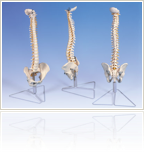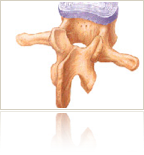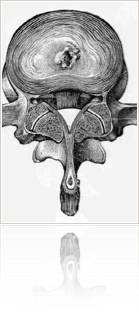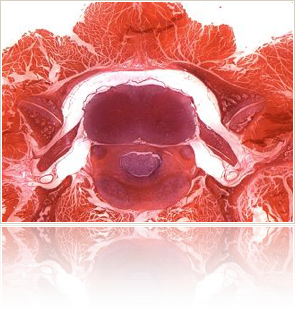




As discussed in the previous section, intervertebral discs are responsible for absorbing a lot of shock and stress that our bodies experience on a day to day basis. Unlike our skin or bones that can be repaired upon injuries, our intervertebral discs do not possess these regenerative functions [2]. Because they contain no vasculature, they do not have a steady supply of nutrients required to repair themselves. Thus, over time the discs start to break down and degenerate. Eventually, they can wear out and fail, leading to painful and dangerous conditions.
Chronic lower back pain is often due to the degeneration of intervertebral discs, and is in fact the most common type of disability in people between the ages of 20 and 50 [2, 5]. Chronic pain can be due to the inability of the nucleus pulposus to effectively absorb shocks and/or to wearing and tearing of 

 the annulus fibrosus [3, 5]. The degeneration of the discs is most common in the lower intervertebral discs, where much more weight and strain from the body is experienced [3].
the annulus fibrosus [3, 5]. The degeneration of the discs is most common in the lower intervertebral discs, where much more weight and strain from the body is experienced [3].



As the body ages, the nucleus pulposus begins to dry out, or dehydrate. This occurs because the GAGs in the ECM begin to break down, and the hydrated gel the GAGs create begins to wain [2]. As this occurs, the nucleus pulposus becomes less effective at absorbing shocks the body experiences. Patients can feel every bump and shock, and this can lead to extreme pain. This type of chronic back pain can also cause reduced mobility, which can significantly hinder daily tasks like working and walking. Chronic back pain can also be caused by degeneration of the annulus fibrosus, and this can lead to even more severe conditions.
Overtime, the annulus fibrosus can break down, becoming weaker and eventually tearing. As the annulus fibrosus wears, pressures are not as evenly distributed across the disc. This can lead to the development of pressure points, which can lead to chronic pain. 

 The annulus fibrosus can also tear, leading to a very serious, painful, and common condition known as a herniated or prolapsed disc [3]. Tearing of the annulus fibrosus is usually an acute event following chronic disc degeneration that can occur when performing a strenuous task, such as heaving lifting. When the tear occurs, the nucleus pulposus protrudes out through the tear and often puts pressure on the large nerve bundles housed in the spine. This can lead to extreme pain as these nerves are pinched, as well as numbing of certain body parts and, in extreme cases, loss of certain functions [3]. Once protruded through the annulus fibrosus, the nucleus pulposus can also leak the jelly like substance into the spine. This can cause inflammation of the spinal nerves, resulting in even more pain and loss of function [3]. If not treated, these conditions can become very serious, and will remain very painful. In the next section, we’ll explore some of the methods currently being used to treat these conditions, with an emphasis on treating herniated discs.
The annulus fibrosus can also tear, leading to a very serious, painful, and common condition known as a herniated or prolapsed disc [3]. Tearing of the annulus fibrosus is usually an acute event following chronic disc degeneration that can occur when performing a strenuous task, such as heaving lifting. When the tear occurs, the nucleus pulposus protrudes out through the tear and often puts pressure on the large nerve bundles housed in the spine. This can lead to extreme pain as these nerves are pinched, as well as numbing of certain body parts and, in extreme cases, loss of certain functions [3]. Once protruded through the annulus fibrosus, the nucleus pulposus can also leak the jelly like substance into the spine. This can cause inflammation of the spinal nerves, resulting in even more pain and loss of function [3]. If not treated, these conditions can become very serious, and will remain very painful. In the next section, we’ll explore some of the methods currently being used to treat these conditions, with an emphasis on treating herniated discs.









Medical Problems & Injuries

To the next section
To the previous section



